The RAF operates a fleet of eight Boeing C-17 heavy-lift aircraft, and put simply, they are brilliant, currently doing fantastic work in Operation PITTING, the evacuation from Kabul.
However, they are one of the most expensive aircraft in the whole fleet to maintain, and they won’t last forever. The UK is the only independent operator of the type in Europe. Its operating capability has been expanded carefully over the years, with the latest being the ability to utilise semi-prepared runways. T
he RAF C-17’s backstory is ensnared with the Future Large Aircraft (FLA) programme that went on to become the A400M, and complex leasing arrangements that are now (thankfully) behind us.
A useful means of considering the C17 in the context of the wider fleet is in the diagram below, and it can be seen that the terms ‘strategic’ and ‘tactical’ have some degree of crossover.
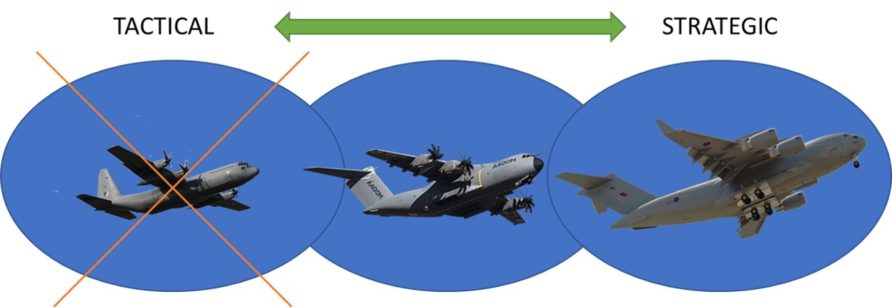
The recent strategic defence and security review indicated the withdrawal of the C-130 fleet, which is going to put pressure on the 22 A400M’s in a timeframe much sooner than having to worry about the replacement for the C-17. But if A400M’s are to fill some gaps left by C-130, they will not be available to supplement the C-17’s, and so any replacement needs to consider this. Yes, I know many will argue that the C-130 cannot be wholly replaced by the A400M, but those arguments are moot, in a few years, we will have no C-130, simple as that.
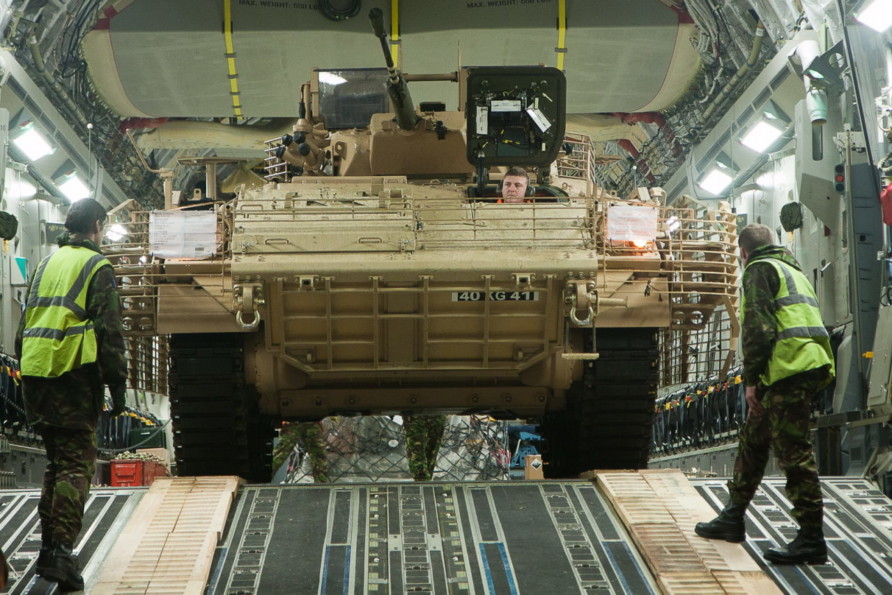
Before considering the options for a replacement, the needs, and demands of all three services (and the wider Government) need to be considered.
Do we require a replacement at all? Should we emphasise one type of cargo over another, payload weights and measures, runway accessibility, austere location operability, air despatch, acquisition and operating expenses, maintainability, speed, range, ability to use defensive aids and secure communications?
That is before we get to questions about UK industry and political considerations.
The way in which this type of aircraft will be used is also vitally important to define, in a hub and spoke arrangement or direct from the start point to the endpoint. The C17 was designed to reinforce Europe directly from the USA and onto a selection of runways that would range from well-found to austere.
The green agenda and strategic objective to be carbon-neutral on or around the timelines for any replacement will also be a significant factor.
At its simplest, an airlifter exists to transport ‘stuff’ at distance, and then at some point, bring that ‘stuff’ back. People, vehicles, pallets, and even other aircraft and outsize loads all form part of the matrix. They will have critical dimensions and weights around which an aircraft’s performance requirement will be built. How many 463L pallets can it squeeze in, can it lift a future main battle tank, or is it high enough to carry a Chinook without complex disassembly, all valid questions?
The A400M cargo hold, for example, was designed around a collection of the known and anticipated vehicle and aircraft payloads, by intent.
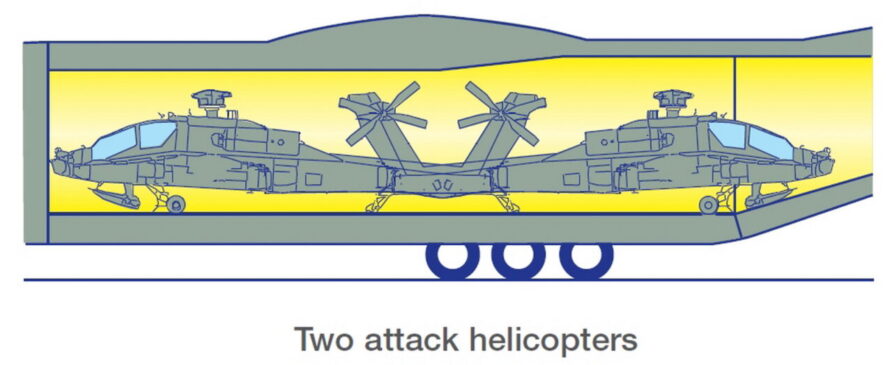
The problem we have seen since the A400M was conceived is that many of those payload items have grown in both size and weight. There is no denying the weight and size growth of pretty much all the Army’s vehicles, and as we potentially migrate to vertical lift technologies like the tilt rotors or coaxial designs, height seems to be getting larger. We, therefore, face the prospect of being unable to transport, in absolute or relative terms, an increasing percentage of service equipment.
Whatever comes after C-17, arguably, needs to be roomier.
Options
ONE — Don’t Replace — Gap
Getting rid of whole fleets always saves a lot of money.
We might consider adjusting our ambition down, joining the NATO C-17 pool early, or simply gapping the capability. It is not an option anyone reading this would prefer, but it is an option nonetheless.
There might also be potential for converting some A330 Voyagers to cargo only and exploiting this fleet more for carrying pallets and light vehicles. I am not sure if Voyager goes out of service before or after C-17, but again, avoiding the binary option of a like-for-like replacement should be on the table.
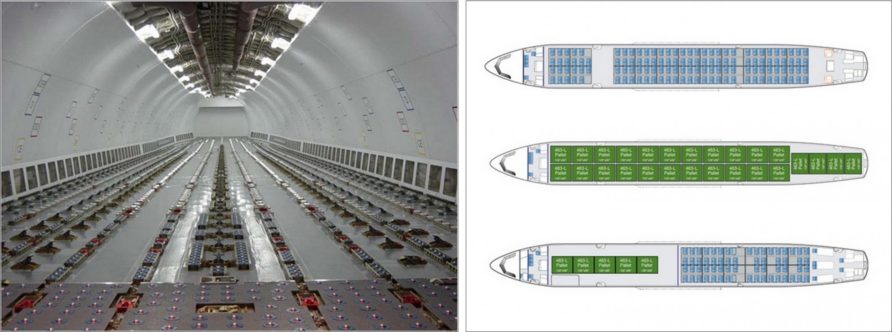
The OSD of C-17 might also be extended past 2040, arguably, the most likely option.
Before reading on, would you mind if I brought this to your attention?
Think Defence is a hobby, a serious hobby, but a hobby nonetheless.
I want to avoid charging for content, but hosting fees, software subscriptions and other services add up, so to help me keep the show on the road, I ask that you support the site in any way you can. It is hugely appreciated.
Advertising
You might see Google adverts depending on where you are on the site, please click one if it interests you. I know they can be annoying, but they are the one thing that returns the most.
Make a Donation
Donations can be made at a third-party site called Ko_fi.

Think Defence Merch
Everything from a Brimstone sticker to a Bailey Bridge duvet cover, pop over to the Think Defence Merchandise Store at Red Bubble.
Some might be marked as ‘mature content’ because it is a firearm!
Affiliate Links
Amazon and the occasional product link might appear in the content, you know the drill, I get a small cut if you go on to make a purchase
TWO — Don’t Replace — Buy More A400M
Another unpalatable choice but a realistic one.
It is relevant to the prosperity agenda and, even with increasing payload size, would still be able to carry a large percentage of in-service equipment. An economy-of-scale argument would also be significant, as would the proportional support costs.
The problem with this approach is the future core of the British Army, Boxer, is a fit too portly to fly on an A400M at any reasonable distance without splitting payload and drive module.
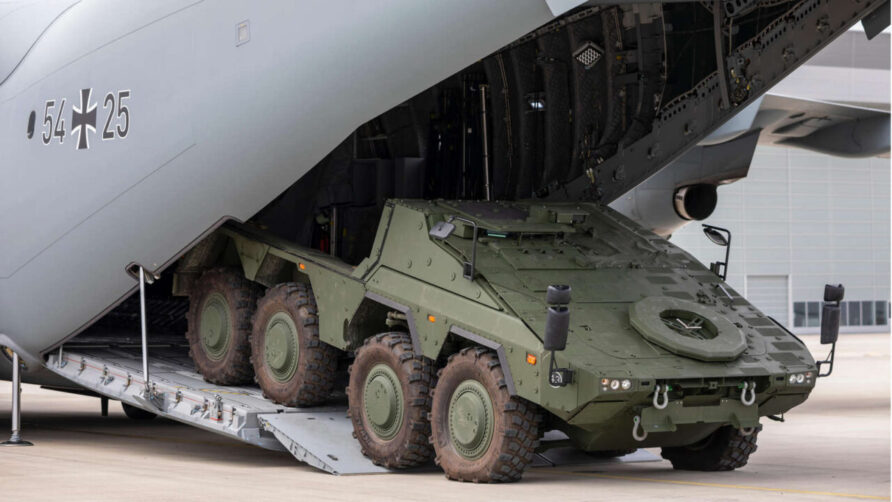
As the Royal Navy uses more deployable modular systems for survey and MCM, their needs should be high on the list also, and these types of equipment can be considerable.
There is also the lingering issue of A400M availability and flying cost per hour.
THREE — Wait for Uncle Sam
Another likely option.
Whether it is some exotic stealth blended wing design or some of Elon and Jeff’s rockets, simply waiting for the US defence industry to come up with options is not a bad way to approach 2040.
There might also be a lower risk option if demand increases, new build C-17’s with different engines or a larger fuselage.
FOUR — Something Else — A Little Left Field
However, for the sake of discussion, another option spring to mind.
Enter into a strategic partnership with Ukraine to design and manufacture a replacement for the AN-124 Ruslan.
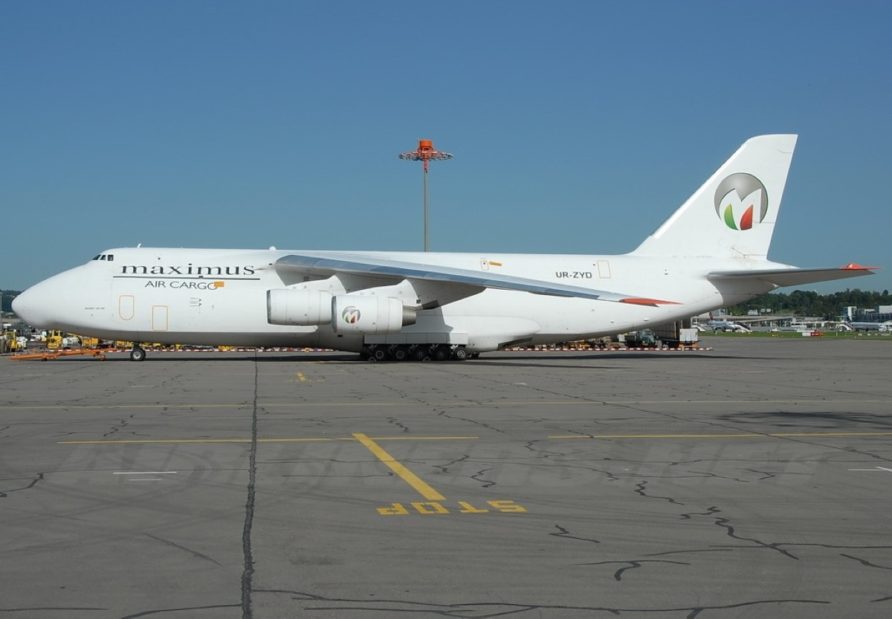
Politics
This is not a new idea; it was part of some peripheral proposals around the time A400M and C17 decisions were made. At a political level, the UK has recently re-affirmed its commitment to strong relationships with Ukraine, trade, diplomatic and defence, so the timing is more favourable. (do read those links, by the way, illustrative of a growing relationship)
Civilian Opportunities
The heavy-lift civilian market relies absolutely on AN-124s that are getting old, there will need to be a replacement at some point. A recent uncontained engine failure resulted in several groundings across the various operators.
And a video
Fly then Drive
With the British Army looking to focus on deployability at distance, the preponderance of Boxer and other wheeled vehicles at the expense of tracked vehicles. Do the ability to land a reasonable-sized intervention force at a distance from its objective become attractive and achievable with an uplift in strategic airlift capacity?
Perhaps, certainly worth discussing. How valuable, really valuable, is the ability to land heavy and outsize loads onto unprepared airstrips that the A400M can access? Hopefully, what this does is raise a handful of discussion points about potential options, and how they might be shaped by emerging capabilities in all three services.
A fleet of A400M and AN-124 (Successor) would certainly provide a different and interesting set of capabilities on which to form around.
AN-124 (Successor)
To close this post, a few thoughts on what any such aircraft would look like,
Everything about AN-124 is impressive, but can it be improved and what risk would a departure from a proven design entail (am I looking at you, Mr Ajax)? Certainly, the closer to the original design, the lower the risk. Beyond component replacement, such as swapping the D-18 engines for Rolls-Royce Trent 700s that would generate significant performance improvements and cost reductions, whilst maintaining commonality with the Voyager fleet, is there any need for much change?
The reality is that, however impressive, the AN-124 was designed several decades ago. Avionics, sensors, communications, and flight control systems could all be improved with the latest technology. But things like landing gear or wing design, would any improvements from using Airbus or Dowty be worth the cost? One of the key attractions of the existing aircraft is just how robust and simple to maintain they are.
This would be central to the discussion, the degree of departure from the current design, or the ambition to make it ‘more Western’.
My view is that we should avoid too great a departure, but if there is one area that might be very desirable is increasing the cargo hold height to accommodate a Chinook without disassembly except for rotor blade removal.
This might a stretch though, it would mean a significant redesign, a dilemma.
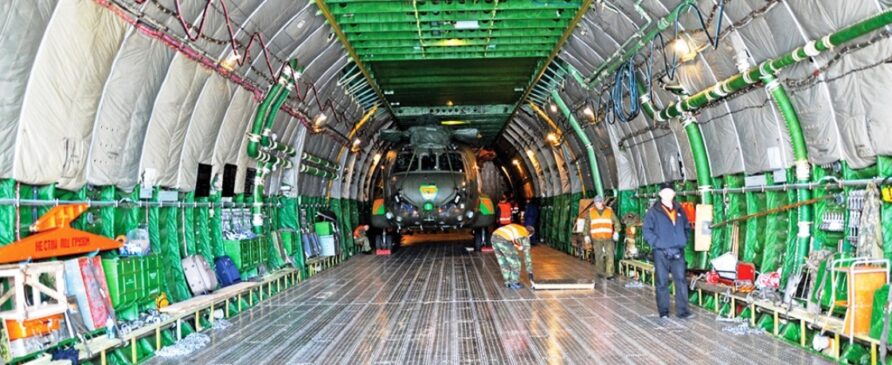
The AN-125-150 model has a 150-ton payload, over double that of a C-17, four Boxers in a single lift, not far off a Mechanised Infantry Company in four. A squadron of six AN-124 could move a mechanised battalion in four cycles. I know it is fashionable to mock the very idea of air deployability and just getting them there in their vehicles is only the start of it, but an aircraft like the AN-124 changes the calculus somewhat.
But it is the volume that impresses, just over one thousand cubic metres.
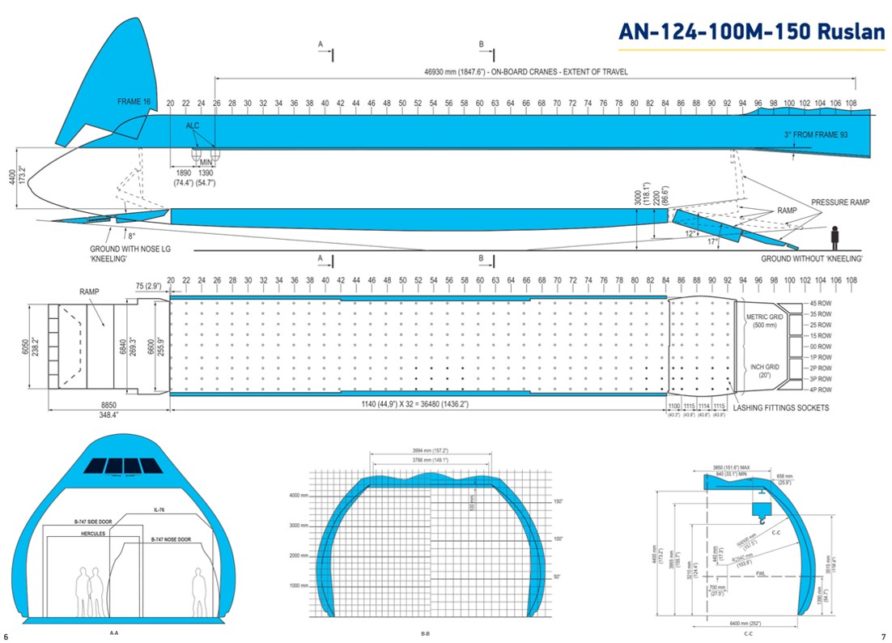
For lower-density loads, like the majority of them, this volume is a game-changer. Especially for light vehicles and pallets (463L). It can comfortably carry 18 pickup trucks or similar light vehicles, but with the addition of the double-deck system, extend that considerably, consider how many Jackals or military pickup trucks could be lifted in one.


This deck system is mostly used for cars but could be adapted for pallets, something the Japanese have planned with their C2 cargo aircraft.
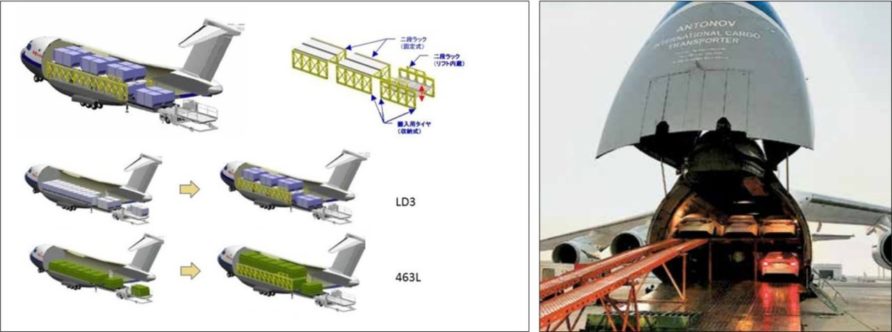
There is potential for a single aircraft to move more than 65 463L pallets, depending on height and space for securing, which is a lot, to say the least.
The downsides of taking this approach should be obvious, flight parameters would be very different to the C-17, as would the number of airports that could be accessed. We have to ask ourselves, though, is the ability to do a fast roll or steep bank with a 40-tonne IFV on approach to a dangerously short runway location whilst popping flares, high on the essential list?
To be clear, AN-124 is not a C-17, but does it need to be?
Read more (affiliate link)

Discover more from Think Defence
Subscribe to get the latest posts sent to your email.


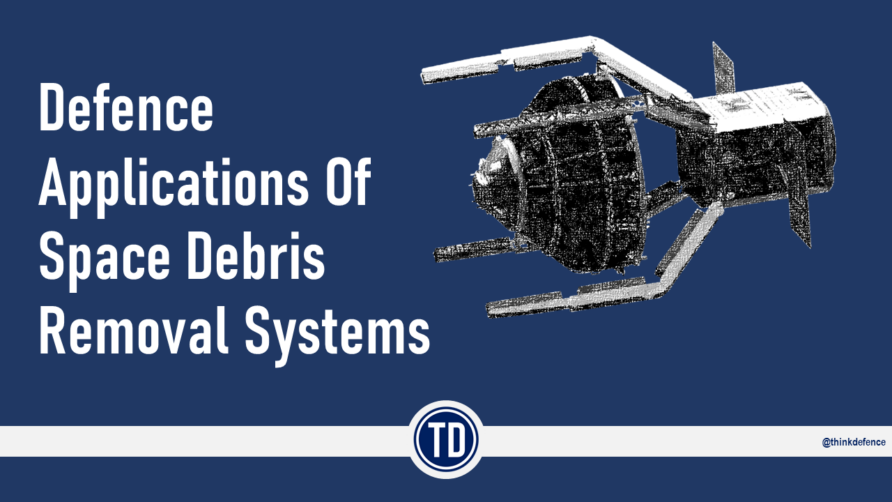
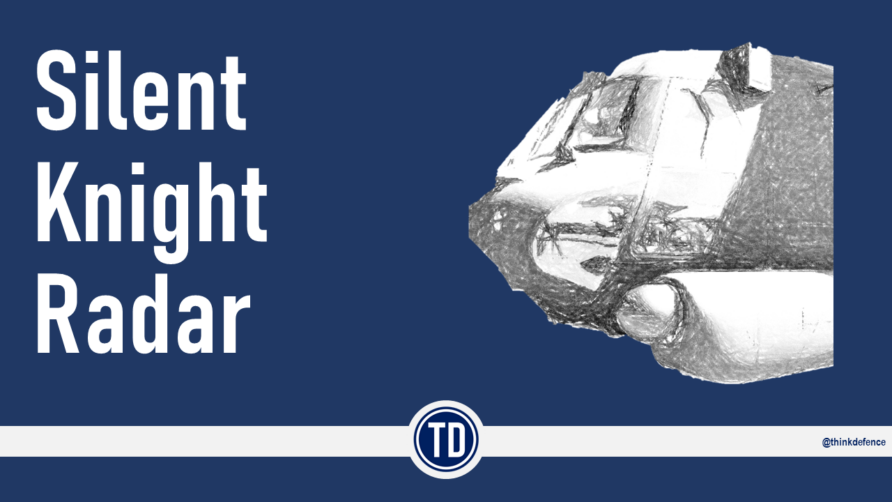
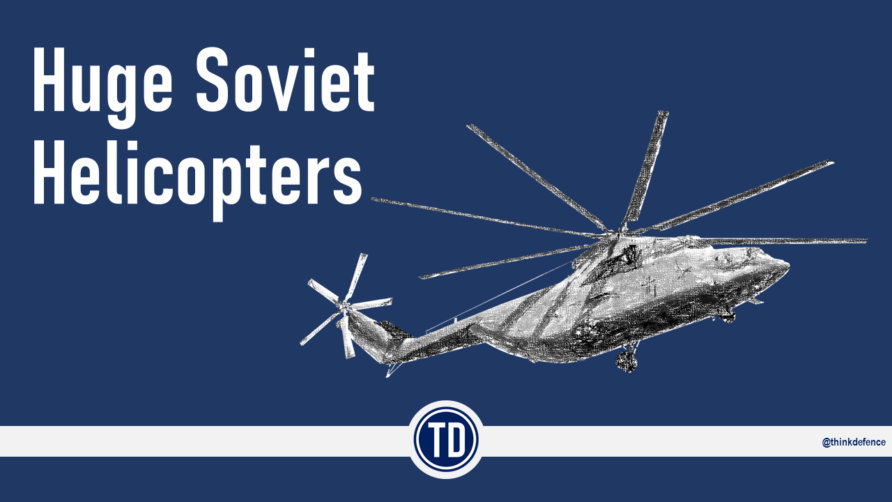
If only we had completely avoided the shitshow of the A400 and just bought 25 C17’s instead :-(
There is no substitute, not because it can carry heavy armoured vehicles (which could never realistically be supported by air), but because it can carry a lot. No, we cannot buy An124 either. I expect the US will restart the line in 5 years and we should buy a load more.
If there is a C-5/An-124 “next” can we put Ge9Xs on it? 4x 490 kN vs 4x 275.6 kN
Read this in Q2 2022 – We (the UK) are Ukraine and Ukraine is us…a bit of post-war aviation procurement esp of something that Ukraine is at the top of the game in seems like a no-brainer
I think there will be a 3. Need as well.
The smaler allround cargo plane.
A bit larger than today's c295 from Airbus.
A twin engine cargo plane, that use the same engine as A400 from Airbus, but maybe downsized in power.
But optional also has a third electric engine,
And/or rocket assisted takeoff option.
With maybe space for 45 soldiers and some gear to drop
Or 12- 15 ton cargo from a long runway,
Or +9 -12 ton cargo from unpaved runway,
And a low cost option for mass production.
( you might need hundreds)
And also the future option of a non pilot option. A drone version, moving cargo from A to B…
The C-295 might be a model to look at,
When it Come to size, but a bit larger, and
5000 -6000 km, with an average cruise speed of +680 km/hr.
Maybe hard, but possible ? Ye why not.
Ad the option of landing on a non paved runway, maybe less than 1100 meter,
And take off less than 1250 meter.
I think an optional maned cargo plane,
With low cost, reduced signature
And fuel efficienct,
Hybrid propulsion,
(A third hybrid electric engine to give more thrust for takeoff and in emergency landing,)
And you might have something that can move cargo And soldiers closer to where the need is.
A huge aircraft like Lockheed C-5 And larger will also be needed. They are expensive.
An so numbers will be low. Unless, you could make a NATO standard heavy cargo plane.
Where all, or most NATO members Join in,
And buy a piece of it.
Then a future C-25 or something,
Moving 150-180+ tonn of Cargo could be build.
Just some thought 's , from an Engineering point of view.
Make it simple, good, And low cost.
Sound easy, but ofc, it is not.
A good basic avlyses of the need, should be done first.
How fast can you make it,
And what will impact cost the most ?
Such question 's should also be on the table.
Realistically we need to buy more A400, that & something smaller to replace the Hercs & BAE 146, also alivate the stress on the Chinook fleet. be it somethjng as simple as an M48 Skytruck, a Casa C295 or as advanced as the Brazilian Millennium jet.
the Ukrainian Ruslan idea would be my opinion for C17 replacement. RR engines, western avionics * let's go. It'd further bring Ukraine into the western fold. maybe even resurrect Myra later.